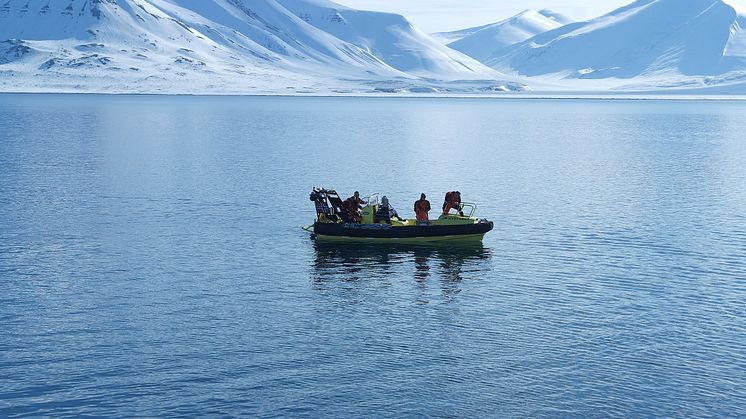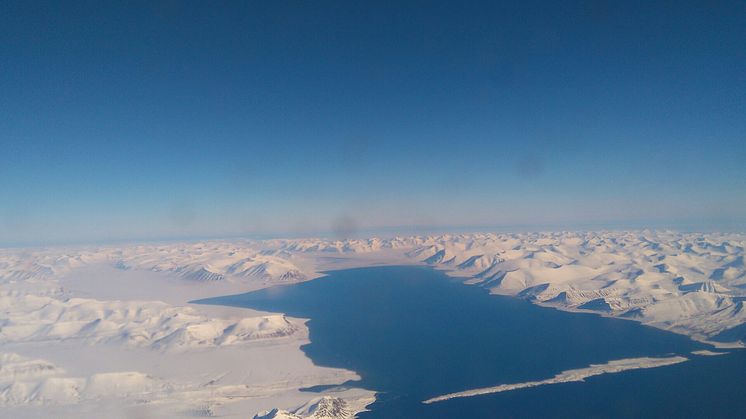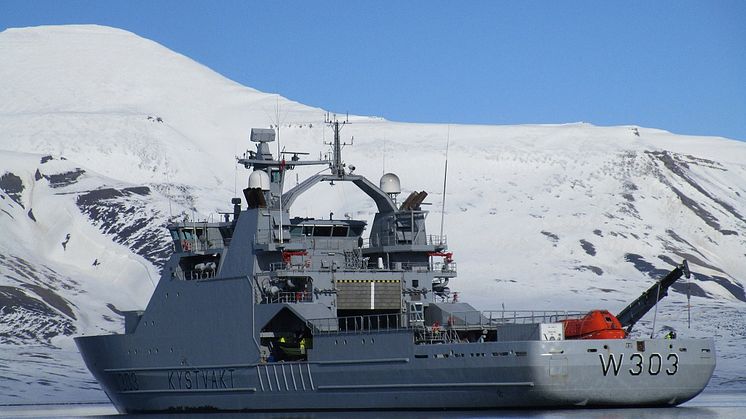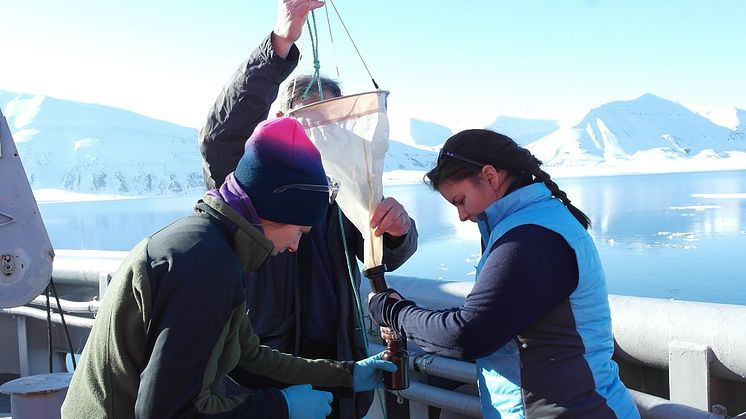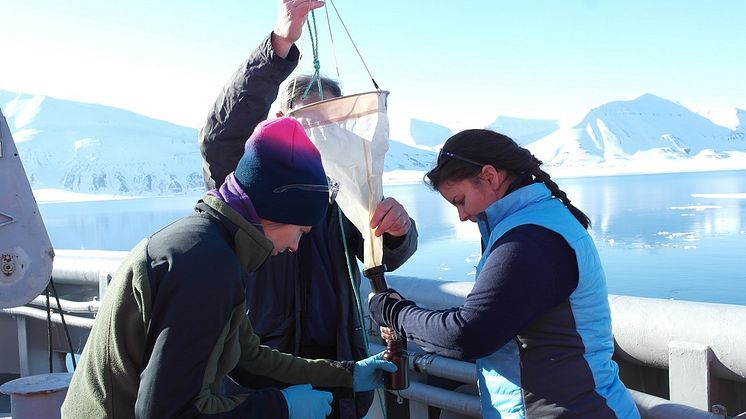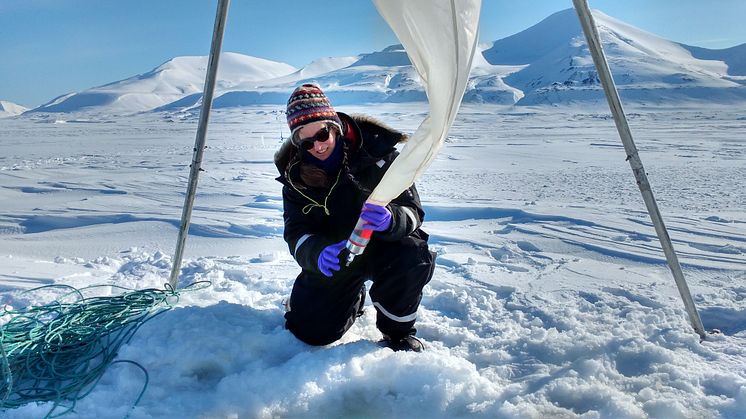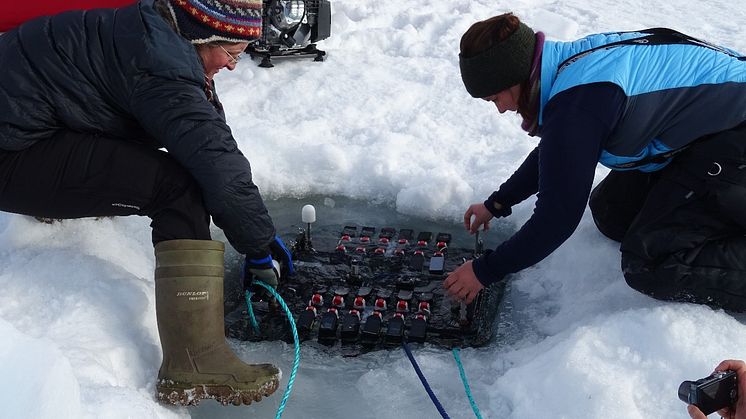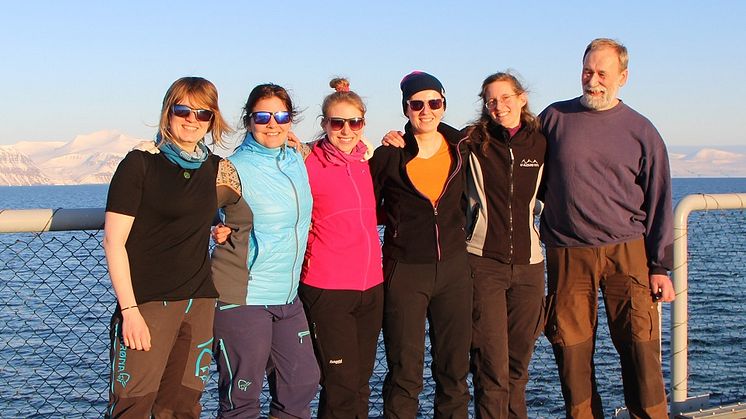
Nyhet -
FAABulous cruise at Svalbard
Eva Leu (senior researcher at Akvaplan-niva AS) is leading a 5-years project called: FAABulous: Future Arctic Algae Blooms – and their role in the context of climate change. This project is funded by the Research Council of Norway and involves five Norwegian and five international collaborating institutions. According to the project plan, two Arctic fjords in Svalbard with contrasting characteristics (with and without sea ice) should be sampled regularly from January to August this year to follow the seasonal succession of algal blooms in sea ice and water.
Due to the exceptionally warm winter in the Arctic this year, we had to cancel all ice-based field work that was planned for 2016. But since we aim add studying future Arctic algae blooms that was maybe exactly what we should have been looking for?
Luckily we got offered some cruise time on-board the coast guard vessel KV Svalbard, and went for a cruise to the almost completely ice-free van Mijenfjorden in order to take samples of phytoplankton and zooplankton along a transect from the ice edge in the innermost part of the fjord until the mouth in Bellsund. In splendid weather conditions, and at still unusual high temperatures for this time of the year, a team of 6 students and researchers together with Eva Leu (Akvaplan-niva) as cruise leader participated in the sample collection. We encountered a very interesting situation with very little phytoplankton in the innermost part of the fjord close to the ice edge, and a strong bloom of diatoms in the outer part of the fjord. Atlantic water was found in Bellsund below 105 m.
We are very grateful for the great support we got from the crew of KV Svalbard!
About the project:
The Arctic environment is currently changing at an unprecedented rate, leading to complex and hitherto poorly understood consequences for the marine ecosystems. Small microalgae represent the basis of the marine food web, and are affected by these changes in multiple ways:
(1) altered light conditions owing to a decrease of sea ice extent and thickness,
(2) ocean acidification (OA), resulting from an uptake of anthropogenic CO2 into the water,
(3) invasion of more temperate species from the south through increased transport of water masses from lower latitudes and higher temperatures in Arctic waters.
Together, these three processes are expected to change the timing, species composition, productivity, and food quality of Arctic algal blooms, with far-reaching implications for the entire ecosystem.
The FAABulous project aims at studying the combined effect of these three processes on Arctic algal blooms in sea ice and water, with a special focus on the control of the onset and development of a bloom. This will be done by combining (i) extensive field studies in two Arctic fjord systems with contrasting environmental characteristics, (ii) experiments to study the combined effect of increased light and CO2 on natural algae communities and single species, and (iii) developing models that allow us to study the relative importance (and joint effects) of different stress factors.
The experimental studies will indicate which algal groups (or species) might be best adapted to tolerate the environmental conditions in the future Arctic ocean, in particular with respect to ocean acidification. These results can be used to identify potential indicator species for OA that can be used in the indicator system for the Barents Sea (developed by the Norwegian Environment Agency).
Furthermore, results from this project will also be used to improve and validate a global model projecting future Arctic sea ice and ocean development with respect to the crucial role of algal blooms.
Photo of the team, from the left:
Miriam Marquardt (UNIS), Ane Cecilie Kvernvik (UNIS), Linn Svendheim Hunstad (UNIS/UiN), Magdalena Wutkowska (UNIS), Eva Leu (Akvaplan-niva), Jozef Wiktor (IOPAS)
